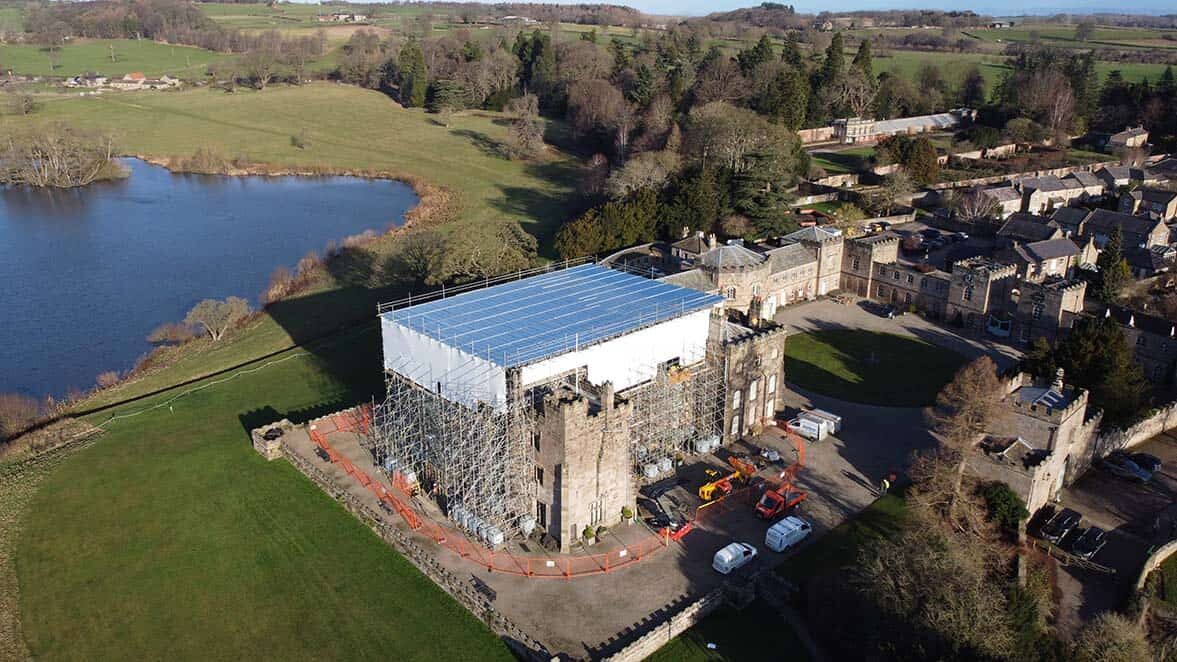Preparing Yorkshire Heritage Buildings for Tourist Season: Safe Restoration Approaches

As spring unfolds across Yorkshire’s stunning landscapes, historic property owners and local councils are turning their attention to essential restoration work before the peak tourist season arrives. Yorkshire’s rich architectural heritage – from York’s medieval streets to Harrogate’s Victorian splendour – represents both a cultural treasure and a significant economic driver through tourism. Ensuring these structures remain safe, beautiful, and accessible requires specialised knowledge and equipment, particularly when it comes to bespoke heritage scaffolding solutions.
The Unique Challenges of Heritage Restoration
Yorkshire’s historic buildings present distinct challenges that standard construction projects simply don’t face:
- Fragile Structural Elements: Centuries-old stonework, timber frames, and decorative features require extraordinary care during access and restoration.
- Regulatory Compliance: Many heritage properties carry listed status or sit within conservation areas, requiring specific permissions and approaches to any restoration work.
- Tourism Considerations: Balancing necessary restoration with visitor access and aesthetic impact during peak seasons demands thoughtful planning.
- Weather Resilience: Yorkshire’s sometimes unpredictable spring weather patterns require flexible yet secure scaffolding approaches.
- Architectural Complexity: Irregular layouts, unique features, and varied construction materials necessitate bespoke scaffolding solutions rather than standard configurations.
Addressing these challenges requires not just any scaffolding provider, but specialists who understand both the technical and heritage preservation aspects of these valuable structures.
Scaffolding Approaches for Heritage Properties
Non-Invasive Installation Methods
Unlike standard construction projects, heritage buildings cannot typically accommodate drilling, bolting, or other invasive attachment methods for scaffolding. Modern heritage-sensitive scaffolding employs techniques such as:
- Counterweight Systems: Self-balancing structures that don’t require attachment to the historic fabric
- Bridging Techniques: Spanning over sensitive features without direct contact
- Pressure Distribution Platforms: Spreading weight across larger areas to prevent point loading on aged foundations
- Custom Base Plates: Specially designed to conform to irregular stone surfaces without damage
These approaches ensure restoration can proceed without inadvertently causing damage to the very structures being preserved.
Aesthetic Considerations for Tourist Sites
For heritage buildings that remain open to visitors during restoration, or those that feature prominently in Yorkshire’s tourist photography, visual impact matters. Modern heritage scaffolding solutions include:
- Printed Scaffold Wraps: Featuring historical images of the building or educational information about the restoration
- Staged Section Implementation: Completing and revealing one façade before moving to another
- Low-Profile Systems: Minimally visible systems for less extensive repairs
- Translucent Protective Sheeting: Allowing visitors to glimpse the building while protecting work areas
These approaches maintain the visitor experience while necessary work proceeds, particularly important for Yorkshire’s tourism-dependent communities.

Case Studies: Yorkshire Heritage Successes
York Minster: Phased Restoration
The ongoing preservation of York Minster demonstrates how sophisticated scaffolding approaches can enable complex restoration while maintaining visitor access. The cathedral’s stone restoration program utilised segmented scaffolding that allowed work to proceed on specific sections while keeping the majority of the building accessible and visually impressive for visitors. The specially designed scaffold included:
- Cantilever sections that minimised ground footprint around busy entrances
- Temporary covered walkways that maintained public access routes
- Lightweight aluminium components that reduced loading on sensitive areas
- Weather-protective enclosures that extended the working season through unpredictable spring conditions
Harewood House: Roof and Chimney Restoration
This 18th-century country house outside Leeds required extensive high-level access for roof and chimney repairs before opening fully to summer visitors. The scaffolding solution included:
- A rolling gantry system that allowed sequential work without full scaffolding enclosure
- Custom-designed load-spreading foundations to protect formal gardens
- Period-appropriate scaffold shrouding that maintained the estate’s visual appeal during wedding season
- Integrated security features to protect the valuable property during off-hours
Whitby Abbey: Coastal Exposure Challenges
The exposed coastal position of Whitby Abbey presented unique challenges for spring restoration work:
- Wind-resistant tie systems designed specifically for the exposed headland position
- Accelerated erection and dismantling capabilities to work around unpredictable coastal weather
- Salt-resistant components to prevent corrosion in the marine environment
- Minimal contact points with the ancient stonework to preserve archaeological integrity

Best Practices for Spring Heritage Restoration
Early Planning and Permissions
Heritage restoration projects require significantly more lead time than standard construction:
- Listed Building Consent applications should ideally be submitted 3-4 months before intended spring work
- Scaffolding designs may need multiple revisions to satisfy conservation officers
- Archaeological assessments might be required before ground-bearing scaffolds can be erected
- Local tourism boards should be consulted regarding timing and visual impact
Weather-Resilient Approaches
Yorkshire’s spring brings improving but still variable weather conditions:
- Wind-loading calculations should account for exposed positions common to landmark buildings
- Rainwater management systems prevent water damage during scaffold enclosure
- Temperature-monitored enclosures allow for sensitive repairs like lime mortar application
- Rapid-response securing protocols for forecast storm conditions
Skilled Heritage Scaffolders
Not all scaffolding teams have heritage experience. Specialists in this field understand:
- Historical construction methods and materials
- How to read and interpret conservation management plans
- Proper handling protocols around fragile architectural elements
- Communication approaches with conservation specialists and historians
Preparing for Summer 2025
With Yorkshire anticipating another strong tourist season, now is the critical time to implement heritage restoration projects. The spring shoulder season offers the perfect window to complete necessary work before peak visitor numbers arrive.
Property owners should consider:
- Conducting thorough building surveys now to identify winter damage requiring attention
- Consulting with heritage scaffolding specialists rather than general construction scaffolders
- Coordinating with local tourism calendars to minimise disruption to planned events
- Investigating grant funding opportunities for heritage restoration before application deadlines
- Developing visitor engagement strategies to turn necessary restoration into an educational opportunity
Preserving Yorkshire’s Heritage for Generations
Yorkshire’s architectural heritage represents not just our history, but our economic future through sustainable tourism. Investing in proper, sensitive restoration approaches this spring ensures these irreplaceable structures remain safe and beautiful for generations to come.
By employing specialised scaffolding solutions designed specifically for heritage contexts, property owners can achieve necessary repairs while respecting the historical integrity and visitor experience that makes Yorkshire’s built heritage so valuable. As specialists in heritage scaffolding solutions across Yorkshire, we understand both the technical challenges and cultural importance of getting these projects right.
Contact our heritage team today on 01423 789 312 to discuss your spring restoration needs and discover how our bespoke scaffolding approaches can protect your property’s past while securing its future.

